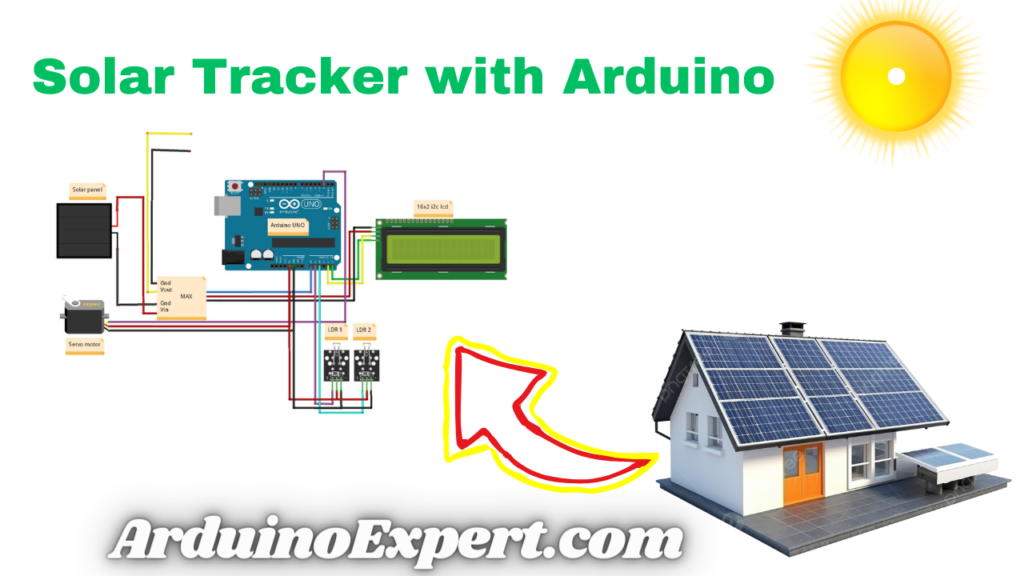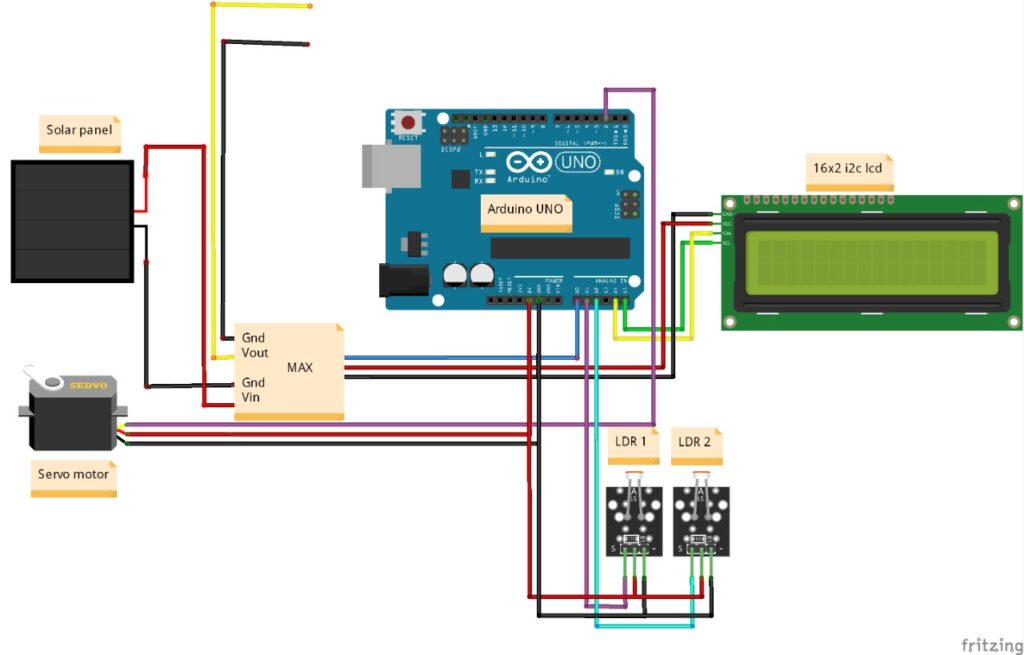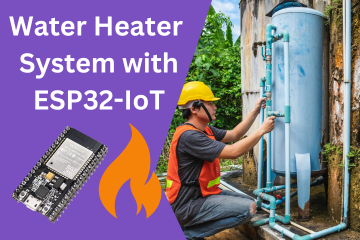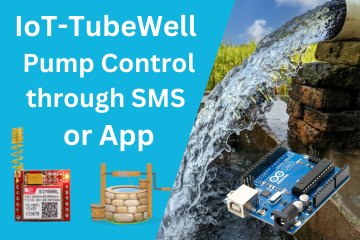The Single-Axis Solar Tracker System is an efficient way to maximize the efficiency of solar panels by dynamically adjusting their orientation to follow the sun’s movement. This system utilizes an Arduino microcontroller, Light Dependent Resistors (LDRs) to detect sunlight intensity, and a servo motor to adjust the panel’s angle accordingly. The tracker follows the sun from east to west throughout the day, ensuring optimal sunlight absorption.

Objective of building a Solar Tracker System:
- To increase solar energy efficiency by improving sunlight exposure.
- To automate solar panel movement using an Arduino-based system.
- To implement a cost-effective and energy-efficient tracking mechanism.
Components used in Arduino Solar Tracker System:
1. Microcontroller
- Arduino Uno: Acts as the brain of the system, processing sensor data and controlling the servo motor.
2. Sensors
- LDRs Sensors Modules (Light Dependent Resistors) (2-4 units): Detects light intensity variations to determine the sun’s position.
3. Actuator
- Servo Motor (MG995 or MG996R): Rotates the solar panel to align it with the sun.
4. LCD Display (Optional)
- (i2C LCD): for displaying information.
5. Power Supply
- 5V Power Source (Arduino-powered or external battery supply).
6. Other Components
- Resistors (10kΩ for LDR voltage divider circuit) (if LDR Modules not used)
- Connecting wires and breadboard
- Solar panel (optional for testing)
Working Principle of Single Axis Solar Tracker System with Arduino, LDR and Servo Motor:
Sunlight Detection using LDRs:
- The system uses two LDR sensors placed at opposite ends of the panel.
- If one LDR receives more light than the other, it indicates that the panel is not optimally aligned.
Microcontroller Processing:
- The Arduino reads the analog values from both LDRs.
- It calculates the difference in light intensity.
- If the difference is significant, it sends a control signal to the servo motor.
Panel Adjustment using Servo Motor:
- The servo motor moves the solar panel towards the direction of higher light intensity.
- The movement continues until both LDRs detect almost equal light levels.
Continuous Tracking:
- The system continuously monitors and adjusts throughout the day.
- At sunset, the system can be programmed to return the panel to its original position for the next day.
Circuit Diagram of Single Axis Solar Tracker:

Code for Single Axis Solar Tracker:
#include <Servo.h>
#define LDR_LEFT A0 // Left LDR connected to A0
#define LDR_RIGHT A1 // Right LDR connected to A1
#define SERVO_PIN 1 // Servo motor connected to pin 9
Servo solarServo;
int servoPosition = 90; // Initial position of the servo (centered)
int threshold = 10; // Sensitivity threshold
void setup() {
solarServo.attach(SERVO_PIN);
solarServo.write(servoPosition);
pinMode(LDR_LEFT, INPUT);
pinMode(LDR_RIGHT, INPUT);
Serial.begin(9600);
}
Working Video Solar Tracker System with Arduino and LDR and Servo:
Advantage of Solar Tracker System:
✅ Improves solar panel efficiency by 20-30% compared to a fixed panel.
✅ Low-cost and energy-efficient design, requiring minimal power for operation.
✅ Automated system, requiring no manual adjustments.
Conclusion:
The Single-Axis Solar Tracker System is an efficient and practical way to enhance solar energy utilization. By using Arduino, LDRs, and a Servo Motor, this system automatically aligns a solar panel to follow the sun, ensuring optimal energy generation. Its low-cost design and ease of implementation make it a suitable project for renewable energy applications.
Would you like additional modifications or improvements?
Need This Project?
If you need this Project with or without Modifications or Customization then you can contact us through WhatsApp. We can deliver you this Project in the Following Ways.
Project Code:
we can provide you Project Code along with Zoom Assistant, through Zoom meeting for Setup of this Project or any other Arduino Project of your need.
Fully Functional Project with Hardware/Components Shipment:
if you can not make this project yourself then you can use this option. We will assemble the Project and will ship it to your Doorstep with Safe Packaging.
Learn More about the services we offer.


